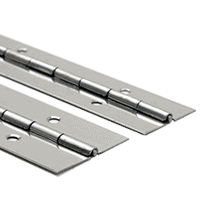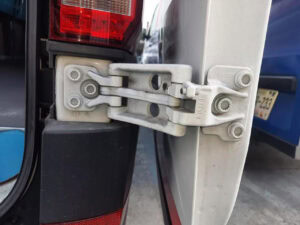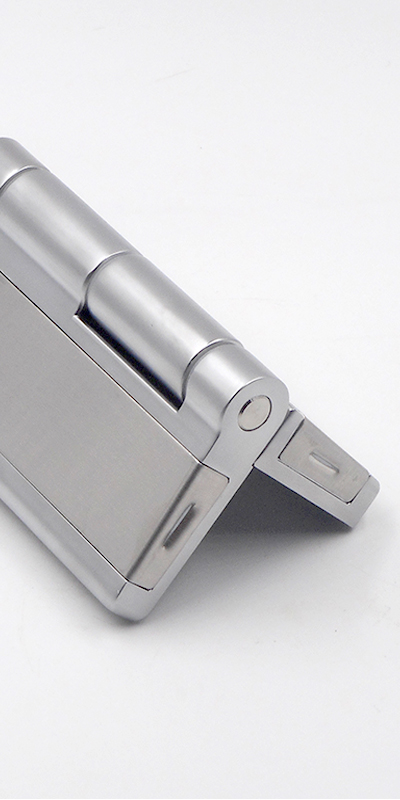Industrial hinges require regular lubrication to maintain optimal function, prevent breakdowns, and extend service life.
Industrial hinges should be lubricated every 3–6 months under normal usage, and as frequently as monthly in dusty, humid, or corrosive environments. Proper lubrication reduces friction, prevents rust, and ensures smooth movement in high-use applications like equipment enclosures, testing chambers, and trailer doors.
Lubrication isn’t just maintenance—it’s protection for your hinges and equipment.
Importance of Lubricating Industrial Hinges
Lubrication is a critical aspect of industrial hinge maintenance due to high mechanical stress and environmental exposure. Lubrication reduces friction between moving parts in industrial hinges, preventing wear, corrosion, and failure—especially in high-cycle or heavy-duty environments.
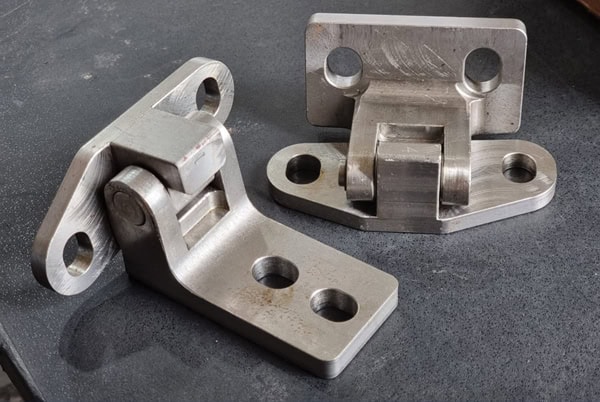
Why Lubrication Matters in Industrial Use
In factories, labs, trailers, and test environments, hinges such as climatic test chamber hinges or heavy duty hinges often endure thousands of open/close cycles, exposure to chemicals, and varying temperatures. Lubrication serves as a barrier between metal parts, reducing direct contact and minimizing friction-related wear.
Without lubrication, these hinges can seize, rust, or misalign—leading to equipment malfunction or downtime. Regular maintenance with suitable lubricants ensures long-term function and minimizes the need for replacement, especially for expensive or custom hinge types.
Common Problems from Lack of Lubrication
Neglected hinges can cause significant mechanical issues, even compromising overall equipment integrity. Failure to lubricate industrial hinges leads to squeaking, rust, restricted movement, and potential failure, impacting both performance and safety.
Symptoms and Consequences
Squeaking noises often indicate dry friction, which, if ignored, can lead to permanent damage. In sealed environments like cold storage room hinges, stiffness or failure due to lubricant breakdown may impact insulation integrity or lead to door malfunction.
Corrosion and rust can form quickly, especially in coastal or humid zones, where unlubricated marine hinges deteriorate faster. Misalignment can result when one hinge wears faster than another, leading to uneven load-bearing and eventual structural strain.
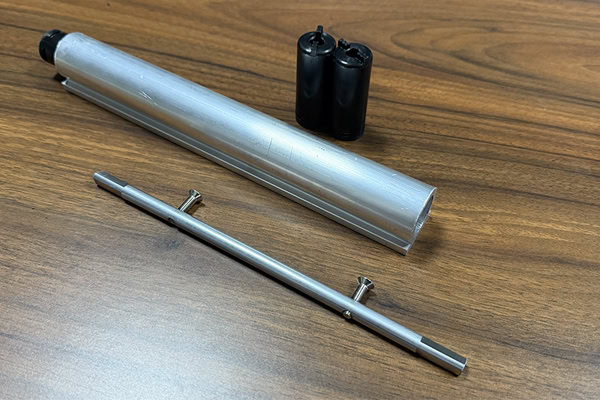
How Often Should Industrial Hinges Be Lubricated?
The right lubrication schedule varies by environment, usage frequency, and hinge type. Industrial hinges should be lubricated every 3–6 months, and monthly in high-dust, high-humidity, or heavy-use areas like labs or mobile units.
Frequency Guidelines by Application
-
Standard Equipment Use: Every 6 months for basic applications such as cabinets, panels, or butt hinges on stationary machinery.
-
High-Cycle Environments: Every 3 months for moving parts in production lines or warehouse doors.
-
Harsh Conditions: Monthly for hinges in outdoor setups, chemical labs, or refrigeration units.
Remember that hinge performance also depends on how it’s mounted—e.g., weld on hinges might trap contaminants if not sealed properly.
Signs That Industrial Hinges Need Lubrication
Early detection of hinge wear can prevent costlier repairs down the line. Noisy operation, stiffness, or visible corrosion are all clear signs your hinges need immediate lubrication.
Warning Indicators
Common signs include:
-
High-pitched squeaks during movement
-
Door or panel resistance
-
Visible rust near pins or knuckles
-
Inconsistent alignment or door sag
Technicians should also inspect for residue build-up, especially in environments where dust or metal filings are prevalent. Hinges on trailer door hinges or enclosures that are frequently accessed are particularly prone to these issues.
Best Lubricants for Industrial Hinges
Choosing the right lubricant is just as important as applying it regularly. White lithium grease and silicone sprays are best for industrial hinges; they offer long-lasting protection, moisture resistance, and low-friction operation.
Lubricant Comparison Table
| Lubricant Type | Recommended For | Pros | Cons |
|---|---|---|---|
| White Lithium Grease | High-load, metal-to-metal hinges | Long-lasting, anti-corrosion | Can attract dust |
| Silicone Spray | Light-load, plastic-metal combos | Clean, moisture-repellent | Needs frequent reapplication |
| Dry Teflon Lubricants | Environments with fine debris | Non-sticky, dust-resistant | Less rust protection |
| WD-40 (Temporary) | Emergency freeing of seized parts | Quick action | Not a long-term lubricant |
Avoid using household oils like olive oil—they degrade quickly and attract grime.
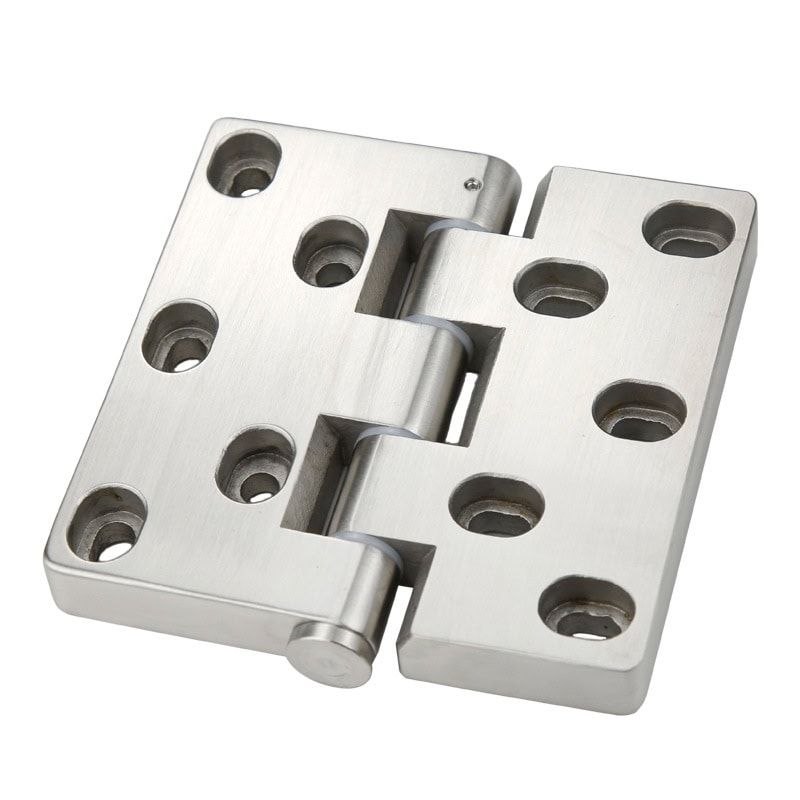
WD-40: Use or Avoid in Industrial Settings?
WD-40 can be useful but is not a comprehensive solution for heavy-duty applications. WD-40 is suitable for short-term lubrication or rust removal, but industrial hinges need follow-up with proper grease for durability.
When WD-40 Is Acceptable
WD-40 is ideal for:
-
Cleaning residue before re-lubrication
-
Loosening seized hinge pins
-
Short-term rust protection in transport
However, its low viscosity means it doesn’t stay in place under load. Always reapply a long-lasting lubricant like lithium grease after using WD-40 on detachable hinges, strap hinges, or special hinges subjected to frequent motion.
Comparing Lubricants: Grease vs. Oil vs. Silicone
Each lubricant type serves different industrial needs—choose based on hinge application and operating environment. Grease offers durability under pressure, silicone works best in clean environments, and oil is rarely ideal due to dust attraction.
Key Comparisons
-
Grease is best for high-weight, external hinges exposed to weather or frequent usage.
-
Silicone spray is ideal for clean-room or indoor lab settings, where cleanliness is critical.
-
Oil, while easy to apply, is not recommended due to poor retention and contamination issues.
Industrial hinge types like Aluminum Geared Continuous Hinges often require specialty greases that maintain integrity across temperature changes.
Steps to Properly Lubricate Industrial Hinges
Correct lubrication technique ensures maximum protection and minimal downtime. To lubricate industrial hinges: clean the hinge, apply the correct lubricant at pivot points, wipe excess, and test movement.
Lubrication Procedure
-
Clean the Hinge: Remove old lubricant and debris using a degreaser or WD-40.
-
Apply Lubricant: Target pivot points, knuckles, and internal pin areas.
-
Test Movement: Open and close the hinge several times to distribute lubricant.
-
Wipe Excess: Prevent residue build-up that attracts dust.
-
Schedule Maintenance: Record date and next service.
This method applies across hinge types—from outdoor industrial hinges to precision applications like laptop hinges, ensuring reliability and smooth operation.
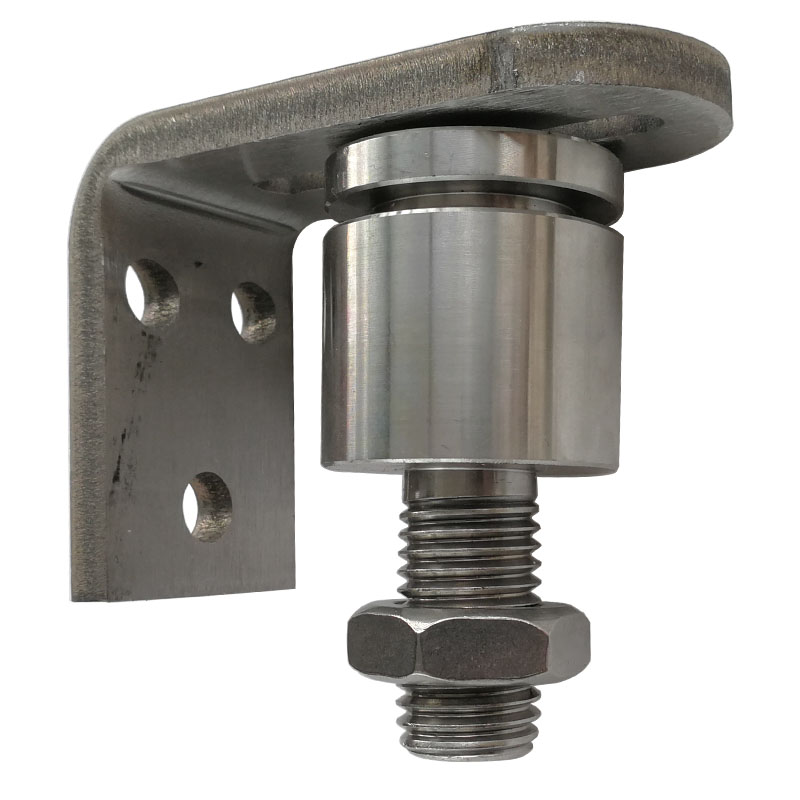
What Lubricants to Avoid in Industrial Settings
Not all lubricants are created equal—some can damage or degrade your hinges.
Sub-heading Snippet paragraph…
Avoid vegetable oils, petroleum jelly, and multi-use sprays for industrial hinges; they cause residue buildup and poor performance under heat or pressure.
Harmful Lubricant Types
-
Cooking Oils/Olive Oil: Break down over time and attract contaminants.
-
Petroleum Jelly: Not temperature stable; hardens or melts.
-
Generic Sprays: Often lack anti-corrosion additives critical in harsh environments.
Avoid these, especially for sensitive equipment using concealed hinges or take-apart hinges in clean rooms or lab test setups.
Lubrication Best Practices for Specialized Hinges
Each hinge type may have specific lubrication demands depending on its function and environment. Special hinges used in testing chambers, marine applications, and temperature-controlled environments require specialty lubricants for reliable performance.
Matching Lubricant to Hinge Type
-
Marine Hinges: Use marine-grade grease with anti-salt corrosion properties.
-
Climatic Test Chamber Hinges: Require temperature-resistant greases, often with PTFE additives.
-
Trailer Door Hinges: Must be re-lubricated frequently due to dust, water, and road salt exposure.
For staked hinges used in electronics or precision gearboxes, use a non-conductive, cleanroom-safe lubricant.
Conclusion
Regular lubrication using the right product protects industrial hinges from wear, extends their lifespan, and ensures optimal performance across environments.


